Loose diamonds often go unnoticed, but we’re here to change that. If you’re eager to learn about loose diamonds and discover everything you need to know about them, you’ve come to the right place.
Here, we’ll delve into the world of loose diamonds and perhaps ignite your appreciation for them over diamonds found in jewelry.
But first, let’s clarify what loose diamonds are. These are diamonds that have been expertly cut and polished but have not yet been set into any type of jewelry.
You may have come across those captivating social media videos featuring people pouring out a bag of tiny diamonds and counting them. Well, those diamonds are precisely what we refer to as loose diamonds.
So, without further delay, let’s embark on this journey and explore the exciting realm of loose diamonds that awaits you!
DESIGN YOUR OWN ENGAGEMENT RING: START WITH A SETTING OR START WITH A DIAMOND. IT’S REALLY UP TO YOU!
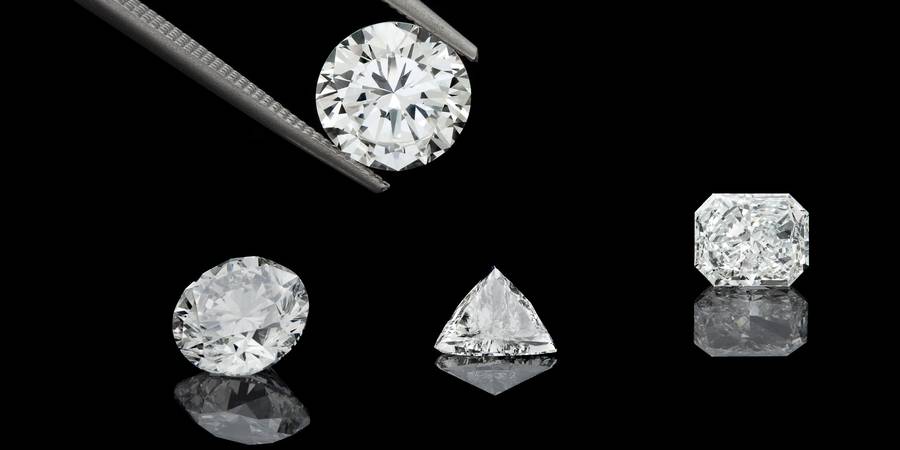
What Are Loose Diamonds?
As mentioned before, loose diamonds are diamonds that have been cut and polished but have not been set into any type of jewelry.
Now, let’s address some common questions regarding loose diamonds. Are diamonds that fall out of jewelry considered loose diamonds? And are there any other types of diamonds that fall under this category?
The answer to the first question is yes. Any diamonds that have become dislodged from their settings in jewelry are now considered loose diamonds. Whether you find the diamond or not after it falls out, it falls into the category of loose diamonds.
It’s important to note that there are dealers who specialize in dealing exclusively with loose diamonds. These dealers cater to individuals who prefer to select their diamonds based on factors like cut, clarity, and other diamond characteristics before choosing the setting and precious metals for their jewelry. We’ll discuss more about these dealers later on.
Understanding this helps to clarify that loose diamonds are not rare or difficult to find. On the contrary, they are quite popular, especially among diamond enthusiasts and collectors.
However, it’s worth mentioning that uncut and unpolished diamonds are not considered loose diamonds. These diamonds are known as raw diamonds and belong to a different category.
To be classified as loose diamonds, they must undergo both the cutting and polishing processes. It doesn’t matter whether the loose diamonds were previously set in a piece of jewelry or not. The key factor is that they are no longer surrounded by precious metal.
Another important point to note is that loose diamonds can be in various conditions. They can be chipped or in pristine condition, as the condition of the diamond does not affect its classification as a loose diamond.
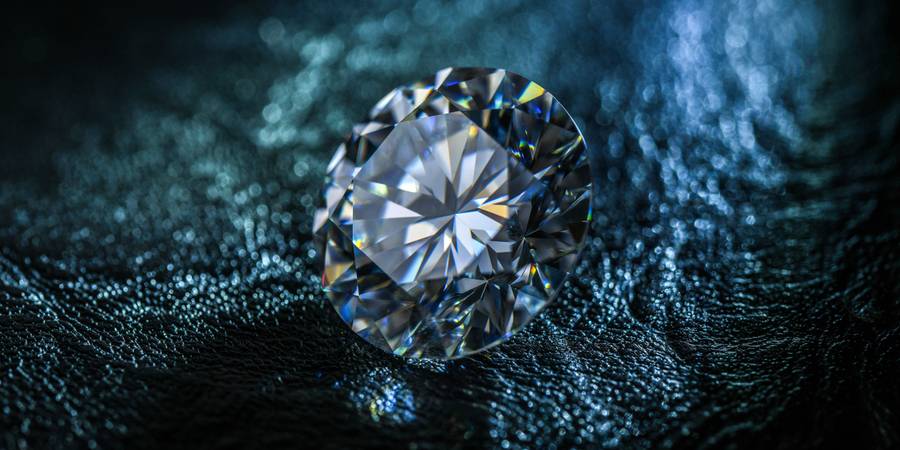
A Short History Of Loose Diamonds
We are well aware of diamonds’ historical popularity among kings and queens for adorning their crowns. However, it’s important to note that loose diamonds were not meant for crowns or any other type of jewelry.
The historical context of loose diamonds, particularly during the Middle Ages when diamonds made their way to Europe, is quite complex. We have gathered interesting information about the history of loose diamonds for you.
According to historical records, the first diamonds were brought to Europe by Alexander the Great in 327 BC. Interestingly, it is speculated that the diamond he brought was partially polished and cut, technically making it a loose diamond.
This was just the beginning of the story.
In Europe, the demand for diamonds skyrocketed, making them one of the most sought-after materials of the time.
The majority of diamonds that arrived in Europe were loose diamonds or diamonds that had become loose at some point. Let us explain what we mean by that:
When dealers transported diamonds to Europe, they often carried them loosely for the sake of convenience. Even if diamonds were found in jewelry pieces, they would frequently be removed, with the precious metals melted down and formed into ingots, while the diamonds were transported separately.
Of course, there were exceptions. In the case of king’s crowns taken as trophies from battlefields, the diamonds remained in the crown.
During the early Middle Ages, loose diamonds that arrived in Eastern and Central Europe were then set into newly crafted jewelry for the upper echelons of society. Thus, the loose diamonds became embedded in jewelry.
In more recent times, loose diamonds have been transported in their loose form as a means of hiding them. In the 1700s and 1800s, particularly in North America, bandits and thieves often targeted travelers carrying diamonds. Therefore, loose diamonds have always been a popular choice for long-distance transportation.
However, one drawback is that small loose diamonds are prone to being lost. Hence, this transportation method carried a certain degree of risk.
In modern times, there are insurance companies specializing in loose diamonds, allowing you to easily insure your diamonds against loss or theft during transport.
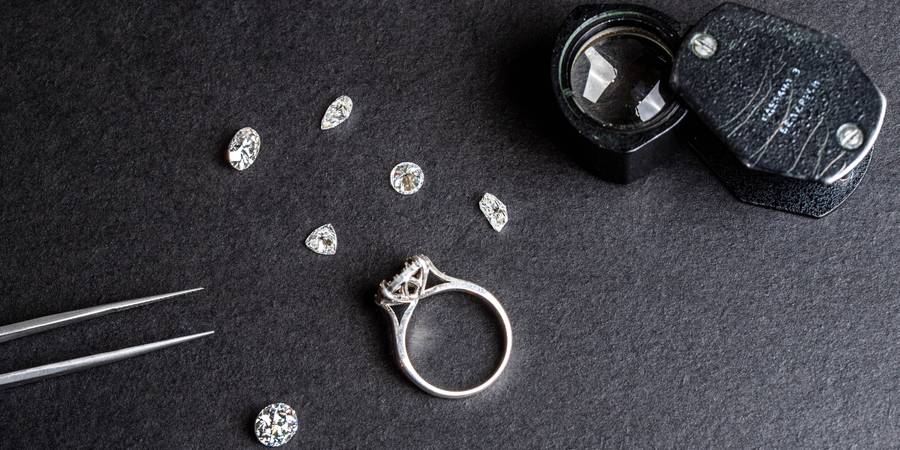
How Are Loose Diamonds Different From Mounted Diamonds?
Apart from the obvious distinction of being embedded or not, there are several differences between loose diamonds and diamonds that are set in jewelry that we would like to bring to your attention.
When it comes to the approach taken in cutting and polishing diamonds, there is a divergence between those intended for jewelry and those meant to be loose.
The allure of loose diamonds lies in the fact that, even if they have a lower clarity grade or less favorable color, when expertly cut and polished, they can exhibit a superior appearance compared to diamonds with higher ratings that are set in jewelry.
This is why loose diamonds hold popularity and why diamond collectors often seek them out. Enthusiasts desire the ability to admire the diamond from various angles, unrestricted by it being embedded within a jewelry piece.
While there is a significant difference in appearance, it does not translate to a higher grading for loose diamonds. Their potential visual superiority does not elevate their grading in any way.
Moreover, loose diamonds facilitate the work of diamond appraisers, as they can more easily assess certain imperfections that might be difficult to spot in a mounted diamond.
These differences may appear minor, but in the world of diamonds, they can completely change the dynamics.
This brings us to the most prominent difference: the manner of keeping the diamonds.
While loose diamonds have their advantages, they are more fragile and susceptible to chipping or damage. Mounted diamonds, on the other hand, are afforded more protection from multiple angles and are less likely to chip, break, or sustain damage.
However, it should be noted that mounted diamonds can still be damaged, although less frequently than loose diamonds.
Conversely, loose diamonds are often stored in secure locations such as safes, deposit boxes, or glass cases lined with soft materials to prevent them from being broken.
Hence, you can see why the way in which loose diamonds are kept differs significantly from how jewelry pieces with embedded diamonds are stored.
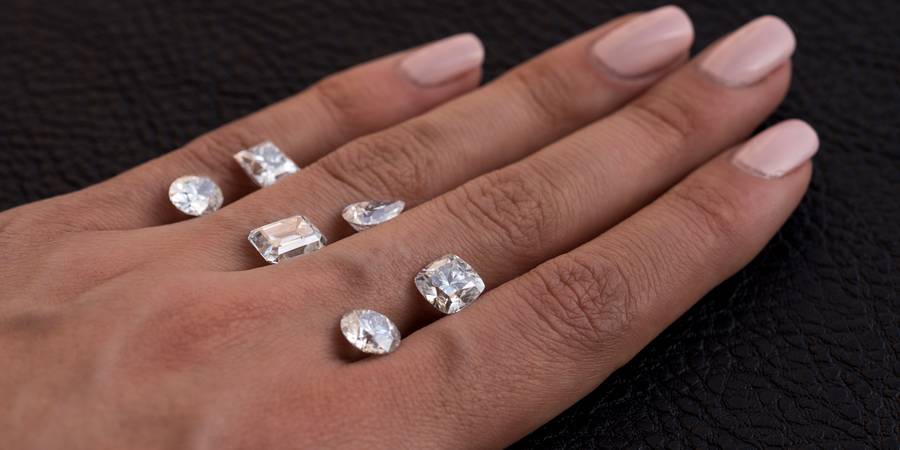
Where Can You Buy Loose Diamonds?
Loose diamonds are typically purchased from specialized loose diamond dealers or jewelry stores that offer loose diamonds in their inventory.
When shopping for loose diamonds, it is advisable to approach diamond dealers who specialize in loose diamonds as they have a wider selection to choose from. This is considered the safest and most reliable option under specific conditions.
These conditions include ensuring that the diamond dealer is certified, possesses a certificate from a reputable source for the diamond you intend to purchase, and has a track record of positive customer reviews. By adhering to these three conditions, you can protect yourself from scams and questionable deals, avoiding the risk of purchasing fake or illegally obtained diamonds.
Taking the time to find such a reputable dealer is a small price to pay compared to the potential consequences of hastily choosing the first dealer you come across without considering these crucial parameters.
It is worth noting that you can also purchase loose diamonds from jewelry stores, similar to where you would find mounted diamonds. However, it is important to recognize that jewelry stores that offer loose diamonds in their inventory are less common, and the selection may be more limited.
If this is not a concern for you, you can visit local jewelry stores and inquire about their availability of loose diamonds.
Regardless of the source, it is crucial to avoid purchasing any type of diamonds, especially loose diamonds, from unreliable sources. Even though they may offer lower prices, buying from such sources can result in acquiring low-quality diamonds, stolen diamonds being sold for quick profit, or even diamond imitations.
By exercising caution and opting for reputable sources, you can ensure a safer and more satisfactory diamond purchasing experience.

Can A Loose Diamond Be A Blood Diamond?
While it is understandable to have concerns about blood diamonds, the chances of loose diamonds being blood diamonds are actually quite low.
Blood diamonds are typically uncut and unpolished as they are quickly excavated and sold by warlords to fund conflicts. Only a small percentage of blood diamonds are cut and polished. Therefore, in 99% of cases, when buying loose diamonds, you can be confident that they are not blood diamonds.
However, it is important to note that loose diamonds can still present other risks, such as being stolen or uncertified, which can cause complications similar to those of blood diamonds.
Furthermore, the international community has taken strong measures against the trade of blood diamonds, making it increasingly difficult for them to enter legitimate markets. Most blood diamond sales occur on the underground black market. Therefore, if you are purchasing from a reputable dealer or jeweler, you have no reason to be concerned about your loose diamond being a blood diamond.
Regarding lab-grown diamonds, the majority of them are initially loose diamonds. After being grown, they are cut and polished. If they are intended for sale, they may later be embedded and become mounted diamonds. However, some lab-grown diamonds remain loose and are sold as such. This appeals to individuals who prefer the flexibility of choosing their own setting and assembling the jewelry piece at a lower cost compared to pre-made pieces with natural diamonds.
When it comes to the price of loose diamonds, various factors influence it. Some key factors include the cut, clarity, color, carat weight, polish method, and country of import. For example, a 1-carat loose diamond with a clarity grade of VS1 or VS2, color grade of G, H, or I, and a very good cut quality may range in price from $8,000 to $11,000. It’s important to note that the price can vary significantly based on the specific characteristics of the diamond, and the cut quality is particularly crucial for loose diamonds as they are not embedded, allowing more visibility of the cut.
In summary, while the chances of loose diamonds being blood diamonds are low, it is essential to purchase from reputable sources to avoid other risks. Lab-grown diamonds often start as loose diamonds before being mounted or sold as loose stones. The price of loose diamonds varies based on several factors, and careful consideration of diamond characteristics is necessary when determining their value.
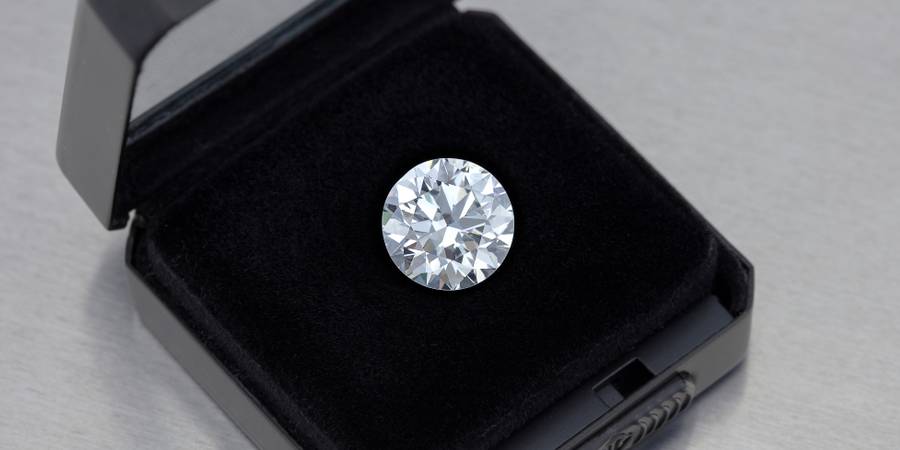
Loose Diamonds – Pros & Cons (In Comparison To Regular Diamonds)
Now that you are acquainted with the essential facts about loose diamonds, let’s explore the pros and cons associated with these diamonds so that you can make an informed decision about whether they are worth purchasing.
Pros of Loose Diamonds:
- Cost-effective: Loose diamonds tend to be cheaper than mounted diamonds since you only pay for the diamond itself without the additional cost of precious metals used in the setting.
- Portability: They are easy to carry around, making them convenient for various purposes such as travel or showcasing to potential buyers.
- Enhanced Beauty: Loose diamonds are often considered more visually appealing. Without being obscured by a setting, they can be admired from all angles, showcasing their brilliance and sparkle.
- Flexibility: Buying loose diamonds offers the flexibility to choose your own setting or design, allowing for a personalized and unique piece of jewelry.
- Resale Value: Selling loose diamonds can be easier compared to mounted diamonds, providing potential financial benefits if the need arises.
- Cost Savings: Opting for a loose diamond that you later embed in a jewelry piece can save you money, as you have more control over the overall cost of the final piece.
Cons of Loose Diamonds:
- Risk of Loss: Due to their small size, loose diamonds are more prone to getting lost. Proper storage and handling are crucial to avoid misplacement or accidental damage.
- Availability: Finding loose diamonds may be slightly more challenging compared to mounted diamonds, as they are not as commonly stocked by jewelers. It may require more effort to locate the specific loose diamond you desire.
- Potential Lower Quality: Some loose diamonds may have lower quality in terms of color, clarity, or cut. It is important to exercise caution and request a certificate for the diamond you intend to purchase to ensure transparency and quality assurance.
- Fragility: Loose diamonds are inherently fragile and can be easily damaged if not handled and stored properly. Taking precautions to protect them from potential harm is essential.
While loose diamonds offer several advantages over mounted diamonds, it is important to be aware of their downsides. The risk of loss, availability challenges, potential lower quality, and their delicate nature should be considered when making a decision. With proper care and attention, however, the benefits of cost-effectiveness, portability, enhanced beauty, flexibility, and potential cost savings can make loose diamonds an appealing choice for many individuals.
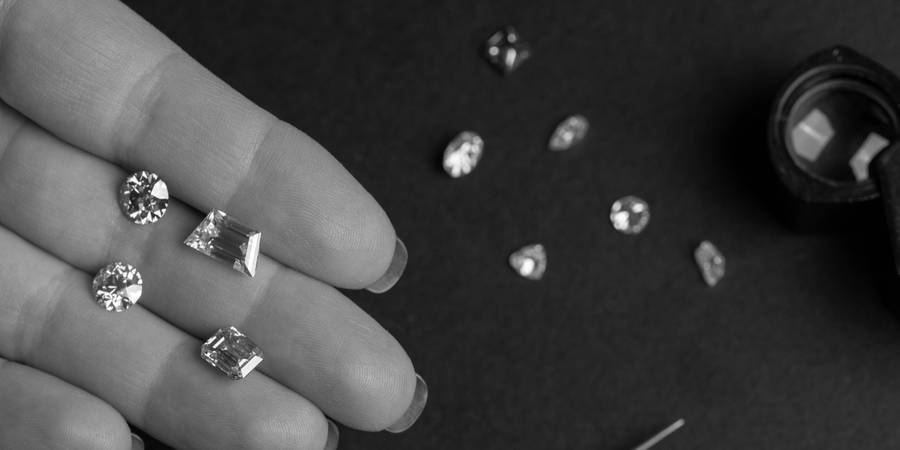
Conclusion
You now possess a comprehensive understanding of loose diamonds, ranging from technical details and historical context to their advantages and disadvantages.
We trust that our insights have equipped you with ample knowledge to feel more informed about loose diamonds and, perhaps, sparked an interest in exploring them further.
Whether you decide to pursue them as a collector or simply appreciate their beauty, we wish you a delightful experience while shopping for diamonds and encourage you to continue your research.
Happy diamond shopping and may your journey into the world of diamonds be a fulfilling one!


